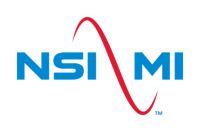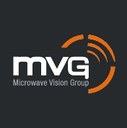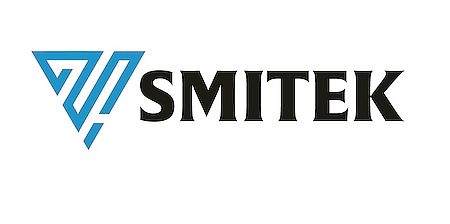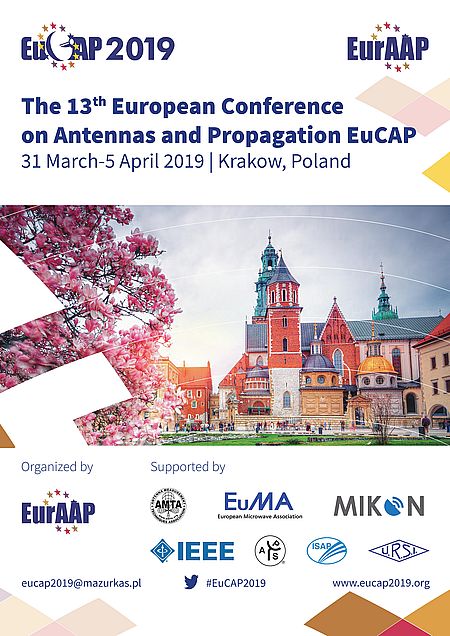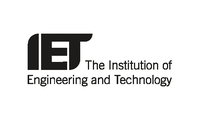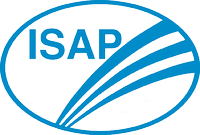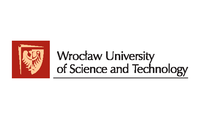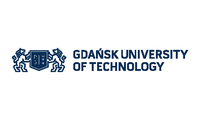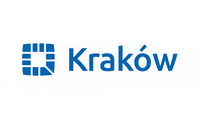Prof. Stuart Gregson
Compact Antenna Test Ranges: The Use of Simulation and Post-Processing Techniques in Support of 5G OTA Testing
Queen Mary, University of London, United Kingdom & Next Phase Measurements, Garden Grove, CA, USA
Biography
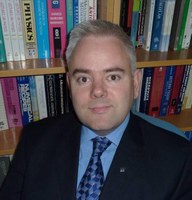 Professor Stuart Gregson has in excess of twenty years of experience working in the space, aerospace and communications sectors and is currently Director of Operations and Research at Next Phase Measurements, and an honorary visiting professor in the School of Electronic Engineering and Computer Science at Queen Mary University of London. He received his BSc degree in Physics in 1994 and his MSc degree in Microwave Solid State Physics in 1995 both from the University of Portsmouth. He received his PhD degree in 2003 from Queen Mary University of London with near-field antenna measurements and statistical pattern recognition as his main subject areas. From his time with: Airbus, Leonardo, NSI-MI and the National Physical Laboratory; Prof. Gregson has developed special experience with near-field antenna measurements, finite array mutual coupling, computational electromagnetics, installed antenna and radome performance prediction, compact antenna test range design & simulation, electromagnetic scattering, 5G OTA measurements and has published more than eighty peer-reviewed research papers on these topics regularly contributing to and organizing industrial courses on these subject areas. At the end of 2007 he was the lead author of a highly praised research text entitled, Principles of Planar Near-Field Antenna Measurements, and in 2014 he co-authored a second text, Theory and Practice of Modern Antenna Range Measurements, both of which are published in the IET Electromagnetic Waves Series. Together with co-author Greg Hindman, he received the 2008 Best Technical Paper Award from AMTA. In 2015 he presented the AMTA Sunday Short Course on Near-Field Measurement Error Analysis & Computational Electromagnetic Modeling and in 2018 he was Measurement Chair for the 12th European Conference on Antennas and Propagation. He is a Fellow of LAPC & AMTA, a Fellow of the Institution of Engineering and Technology, a Fellow of the Institute of Physics and is a chartered Engineer and Physicist. In 2018, Prof. Gregson was elected to the AMTA Board of Directors and is currently serving as Treasurer.
Professor Stuart Gregson has in excess of twenty years of experience working in the space, aerospace and communications sectors and is currently Director of Operations and Research at Next Phase Measurements, and an honorary visiting professor in the School of Electronic Engineering and Computer Science at Queen Mary University of London. He received his BSc degree in Physics in 1994 and his MSc degree in Microwave Solid State Physics in 1995 both from the University of Portsmouth. He received his PhD degree in 2003 from Queen Mary University of London with near-field antenna measurements and statistical pattern recognition as his main subject areas. From his time with: Airbus, Leonardo, NSI-MI and the National Physical Laboratory; Prof. Gregson has developed special experience with near-field antenna measurements, finite array mutual coupling, computational electromagnetics, installed antenna and radome performance prediction, compact antenna test range design & simulation, electromagnetic scattering, 5G OTA measurements and has published more than eighty peer-reviewed research papers on these topics regularly contributing to and organizing industrial courses on these subject areas. At the end of 2007 he was the lead author of a highly praised research text entitled, Principles of Planar Near-Field Antenna Measurements, and in 2014 he co-authored a second text, Theory and Practice of Modern Antenna Range Measurements, both of which are published in the IET Electromagnetic Waves Series. Together with co-author Greg Hindman, he received the 2008 Best Technical Paper Award from AMTA. In 2015 he presented the AMTA Sunday Short Course on Near-Field Measurement Error Analysis & Computational Electromagnetic Modeling and in 2018 he was Measurement Chair for the 12th European Conference on Antennas and Propagation. He is a Fellow of LAPC & AMTA, a Fellow of the Institution of Engineering and Technology, a Fellow of the Institute of Physics and is a chartered Engineer and Physicist. In 2018, Prof. Gregson was elected to the AMTA Board of Directors and is currently serving as Treasurer.
Prof. Clive G. Parini /co-author/
Queen Mary, University of London, United Kingdom
Biography
 Professor Clive G. Parini BSc(Eng), PhD, CEng, FIET, FREng. Joined Queen Mary as Lecturer in 1977, promoted to Reader in 1990, promoted to Professor in 1999 and is currently Professor of Antenna Engineering and heads the Antenna & Electromagnetics Research Group. He has published over 400 papers on research topics including array mutual coupling, array beam forming, antenna metrology, microstrip antennas, millimetrewave compact antenna test ranges, millimetrewave integrated antennas, metamaterials and on-body communications. In 1990 he was one of three co-workers to receive the IEE Measurements Prize for work on near field reflector metrology. In 2002, along with several co-workers, he was awarded the BAE SYSTEMS Chairman’s Bronze Award for Innovation for work on microwave near-field metrology. In 2008 he co-authored the book entitled “Principles of Planar Near-Field Antenna Measurements” and in 2014 co-authored the book entitled “ Theory and Practice of Modern Antenna Range Measurements”.
Professor Clive G. Parini BSc(Eng), PhD, CEng, FIET, FREng. Joined Queen Mary as Lecturer in 1977, promoted to Reader in 1990, promoted to Professor in 1999 and is currently Professor of Antenna Engineering and heads the Antenna & Electromagnetics Research Group. He has published over 400 papers on research topics including array mutual coupling, array beam forming, antenna metrology, microstrip antennas, millimetrewave compact antenna test ranges, millimetrewave integrated antennas, metamaterials and on-body communications. In 1990 he was one of three co-workers to receive the IEE Measurements Prize for work on near field reflector metrology. In 2002, along with several co-workers, he was awarded the BAE SYSTEMS Chairman’s Bronze Award for Innovation for work on microwave near-field metrology. In 2008 he co-authored the book entitled “Principles of Planar Near-Field Antenna Measurements” and in 2014 co-authored the book entitled “ Theory and Practice of Modern Antenna Range Measurements”.
He is a Fellow of the IET and a past member and Chairman of the IET Antennas & Propagation Professional Network Executive Team. He is a past member of the editorial board and past Honorary Editor for the IET Journal Microwaves, Antennas & Propagation. In 2009 he was elected a Fellow of the Royal Academy of Engineering. He was a member of the REF2014 sub-panel for Electrical and Electronic Engineering, Metallurgy and Materials.
He was PI on the £1m EPSRC Platform grant “Antennas for healthcare and Imaging” (2008-2013), CoI on the Groups (2011-7) £4.6m EPSRC Programme Grant QUEST (The Quest for Ultimate Electromagnetics using Spatial Transformations), and CoI on the (2018-2021) £1.2m EPSRC national research facility TERRA (Thz antEnna fabRication and measuRement fAcilities).
Synopsis
The Compact Antenna Test Range (CATR) is a long established, general purpose, wide-band, test methodology for acquiring far-field radiation characteristics within comparatively small test volumes [1]. By projecting an image of the CATR feed at infinity through field collimation, typically achieved by means of reflection, the CATR synthesizes the type of wave-front that would be incident on the antenna under test (AUT) if it were instead located at a position very much further away from the feed than is actually the case. By recording the coupling of this collimated pseudo plane-wave into the AUT for different orientations, we may obtain the classical measured “far-field” radiation pattern in real-time. Thus, the quality of the CATR pattern measurement is primarily determined by the uniformity and purity of the phase and amplitude of the pseudo plane-wave [2, 3, 4]. Thus, the performance of the range is largely, but not completely, crystallized at the time that the reflector and feed are fabricated and installed with scope for a posteriori performance improvements being relatively limited. However, even here, uses of advanced post-processing techniques have recently been shown to provide worthwhile benefits to the facility-level uncertainly budget and crucially, these too can be verified and developed in conjunction with electromagnetic simulation [1]. Thus, the successful development and deployment of CATRs has, necessarily, been predicated upon a corresponding development in the speed, accuracy and sophistication of the attendant CATR electromagnetic simulation software. Recent developments in CATR simulations have enabled the design and realization of increasingly complex and ever more efficient CATR assemblies that span progressively wider frequency ranges. These end-to-end simulations, which increasingly harness and rely upon parallel processing architectures, can now be used to determine the impact of the precise CATR design on over-the-air (OTA) communications system parameters. This therefore paves the way for the design and development of CATRs that are fully optimized for the test, calibration and OTA measurement of demanding mm-wave massive multiple input, multiple output (MIMO) backhaul antenna systems. This is particularly important as interest has largely shifted away from traditional antenna performance metrics and instead is focusing on communication system figures of merit [5, 6]. Similarly, sophisticated post processing techniques now enable communication system level parameters such as far-field error vector magnitude (EVM), bit error rate (BER), signal-to-interference-plus-noise-ratio (SINR), etc. to be derived conveniently and efficiently from conventional ranges without the need for additional, expensive, specialist RF instrumentation. This paper presents an introduction to the CATR, the simulation and data post-processing highlighting some of the more significant developments while focusing on those aspects that are most pertinent to modern communication systems which are essential for the successful roll-out of 5G. Index Terms—CATR, 5G, Massive MIMO, mm-Wave, OTA, CATR, EVM, EM Simulation.


